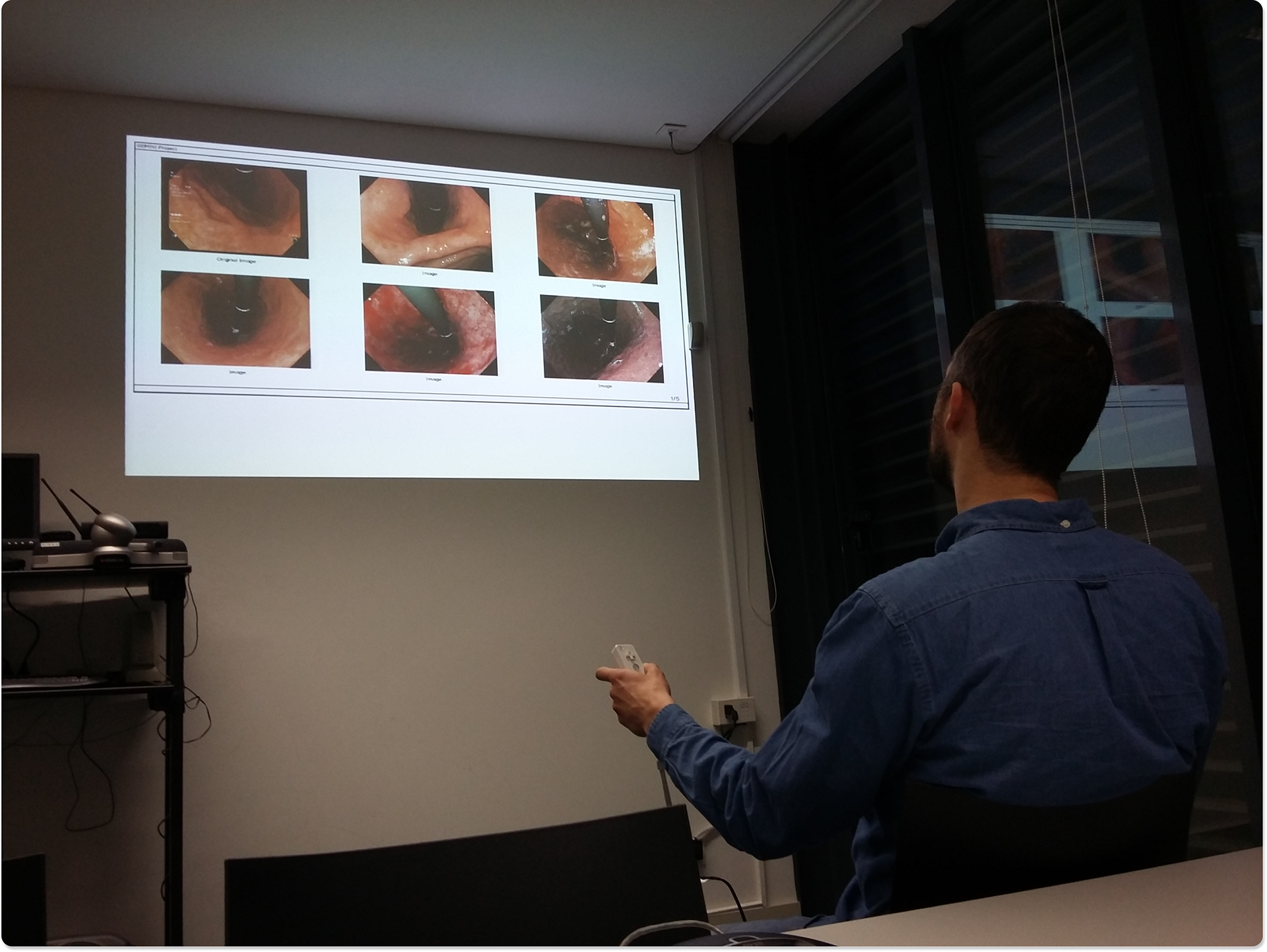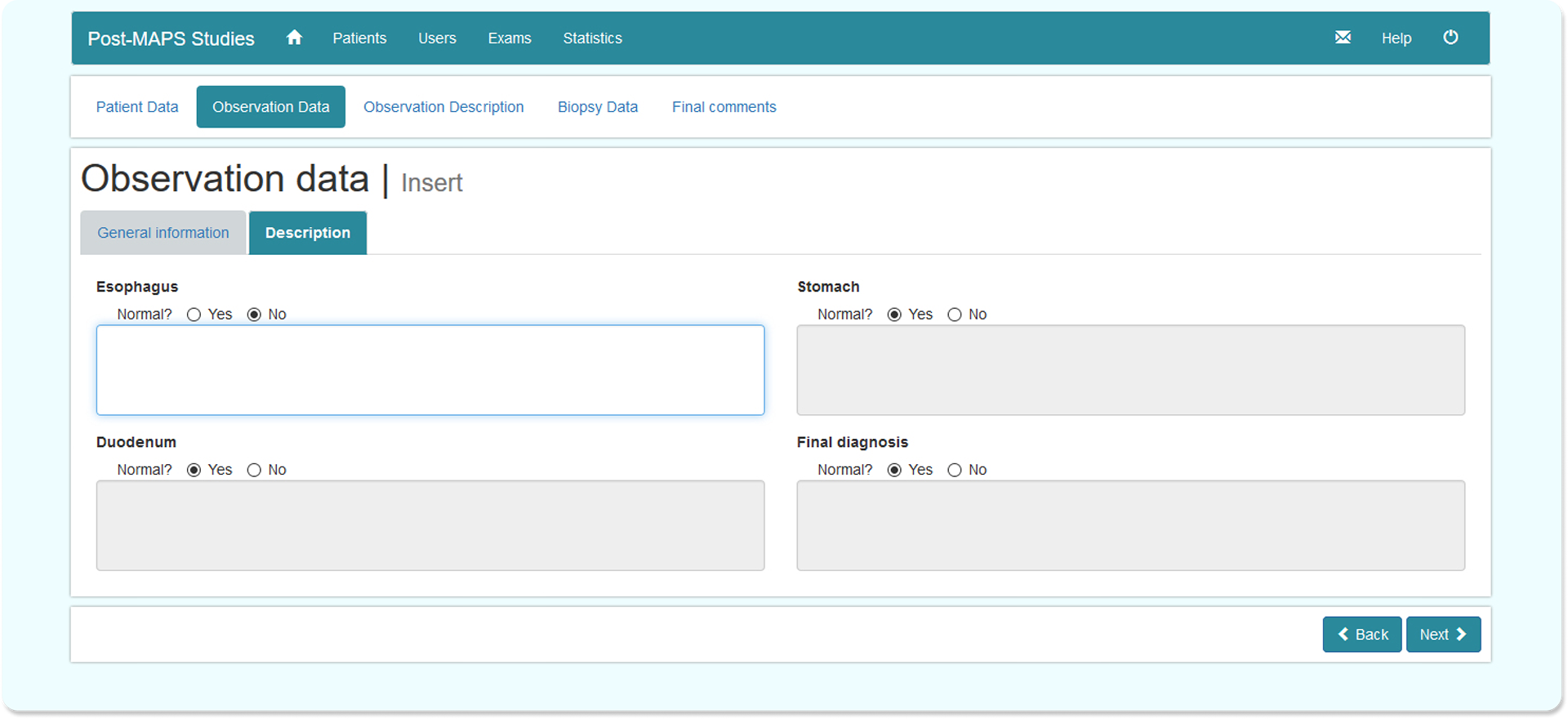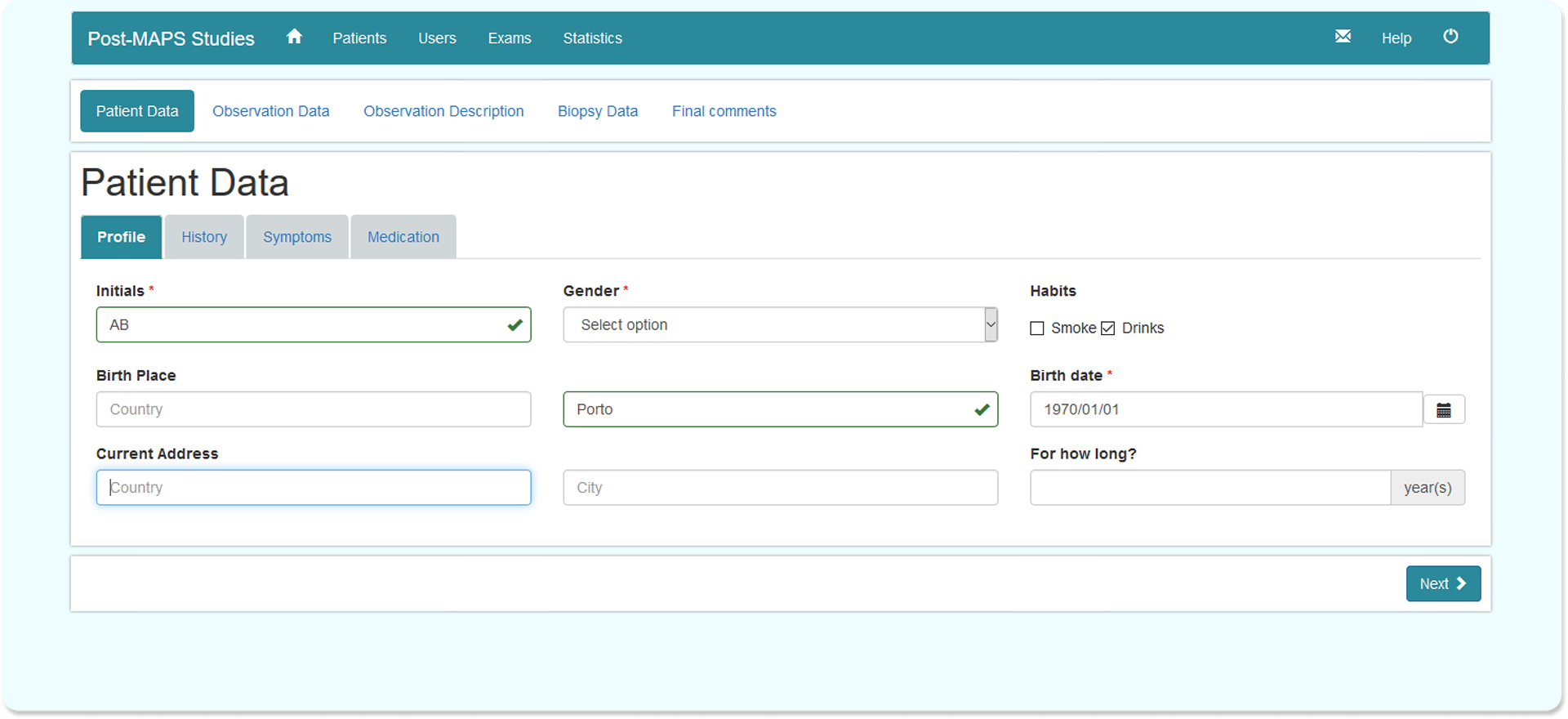Description: With a novel methodology for the diagnosis of premalignant gastric conditions and lesions (Winner of Pfizer Research Award 2016), came the need to develop a web platform to collect gastroenterological data from various medical centers in several European countries, as well as an interactive clinical decision support system (CDSS) that could be used to help with the diagnosis within a gastroenterology room during real endoscopic examinations. In order to ascertain how users could control it, their natural response was measured by facing them with different tasks and types of interaction paradigms.
Output: A web platform to gather patient exam data, an endoscope maintenance management tool, a prototype for the CDSS, along with three published papers.
Methodology: Content strategy, ethnographic study + contextual interviews, use cases + user flows, medium/high fidelity prototyping, usability testing + cognitive walktrough.
The clinical protocol required a web platform that allowed the collection of patient and observation data from the exams. It was mostly a matter of understanding user requirements and translating them into a clean and objective interface that optimized user interaction and reduced the occurrence of errors during data entry. Interviews were conducted with the clinical staff in order to translate their needs into use cases, a logical data insertion flow, and a simple architecture. Content strategy was very important as incomplete information on a record makes it unusable. As the protocol steps were non-negotiable, and while aiming for a gentle learning curve, a form/wizard-like interface was built, taking into account UI elements that facilitated data insertion, with a special focus on clear step-by-step indications, on-the-fly feedback, and the ability to easily recover from errors. A few dogfooding sessions were organized in order to understand which variables could affect the perceived usability and iron out bugs, before releasing a stable version. The platform was online and used by several health professionals from various medical centers in European countries with no major issues for two years.
A small side project was also undertook, as the construction of a simple endoscope maintenance management tool. Content and features were overlooked by the technicians throughout the development in a close participatory design process. Final version was handed off for in-house usage.
The main request however, was set on a system that could work side-by-side with what healthcare professionals already had on site. An ethnographic study was carried for a few weeks for better familiarization with endoscopic procedures and general workflow, as well as clear depictions of the scenario and its restrictions in terms of space and equipment. Contextual interviews were also conducted with participating personnel (doctors, nurses, auxiliary staff, patients) in order to identify and model all relevant personas, and obtain accurate descriptions of their needs and ability to use technology. A few use cases and user flows were built from that data, which helped to define functions and specific action models. Four different types of interaction paradigms were tested (voice, gesture, touch, endoscope) while trying to understand which one would fit best within the environment without disrupting the routine or wasting time with new learning curves. Content was simple enough to not justify IA research methods. Tasks were proposed by the professionals, resulting in 'big red button' medium fidelity prototypes, slightly adapted for different interaction paradigms that were tested both in-site with the professionals, as well as off-site with a large group of medical students. Two loops of usability testing paired with an expert review was enough to achieve a final prototype for handoff.







